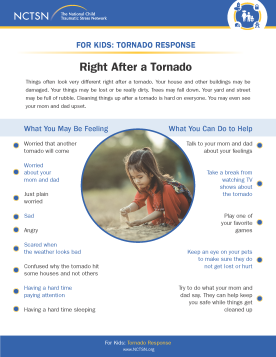
Tornado Response for Kids: Right after a Tornado
Offers information to children about how they may be feeling after a tornado and ways to cope with those feelings.
The following resources on child trauma were developed by the NCTSN. To find a specific topic or resource, enter keywords in the search box, or filter by resource type, trauma type, language, or audience.

Offers information to children about how they may be feeling after a tornado and ways to cope with those feelings.
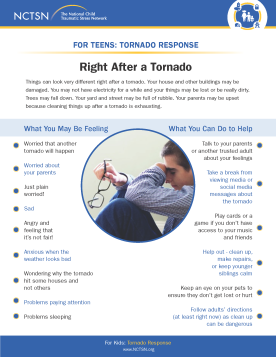
Offers information to teens about how they may be feeling after a tornado and ways to cope with those feelings.
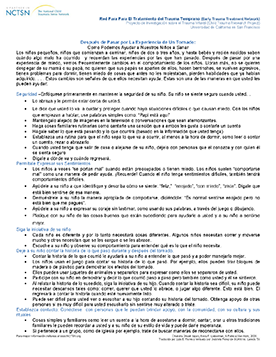
Proporciona información sobre cómo los padres y cuidadores pueden ayudar a sus hijos pequeños a sobrellevar las secuelas de un tornado. Esta es la versión en español de After the Tornado: Helping Young Children Heal.

Offers parents guidance on helping their children after a tornado. This fact sheet describes common reactions children may have, how parents can help them, and self-care tips after a disaster.

Provides parents and providers with information about the psychological impact of tsunamis.
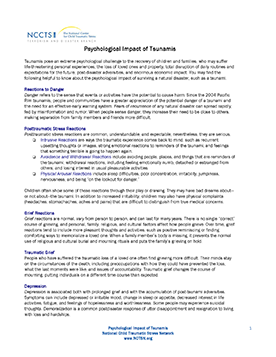
Provides parents and providers with information about the psychological impact of tsunamis. This fact sheet describes common reactions to disasters, posttraumatic stress reactions, grief reactions, trauma and loss reminders, traumatic grief, and coping after a disaster.
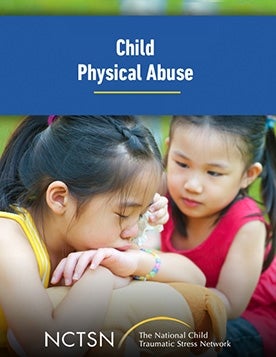
Identifies key components of clinical assessment for child physical abuse.

Allows families to list important telephone numbers and other information that could be useful in the case of an emergency.
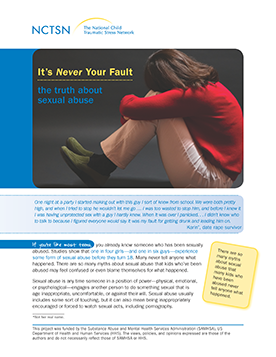
Provides information to teens about sexual abuse. This fact sheet describes what sexual abuse is, how common it is, myths and facts about sexual abuse, and where to go for help.
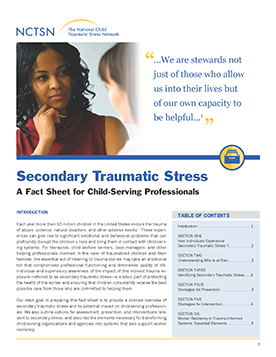
Offers child-serving professionals information about secondary traumatic stress (STS).

Offers teens information about the differences between sex and sexual abuse. This fact sheet describes when sex is used as a weapon, including the use of physical force, emotional or psychological force, secrecy about sex, and victim blaming.

Provides information to teens about staying safe while they are online.